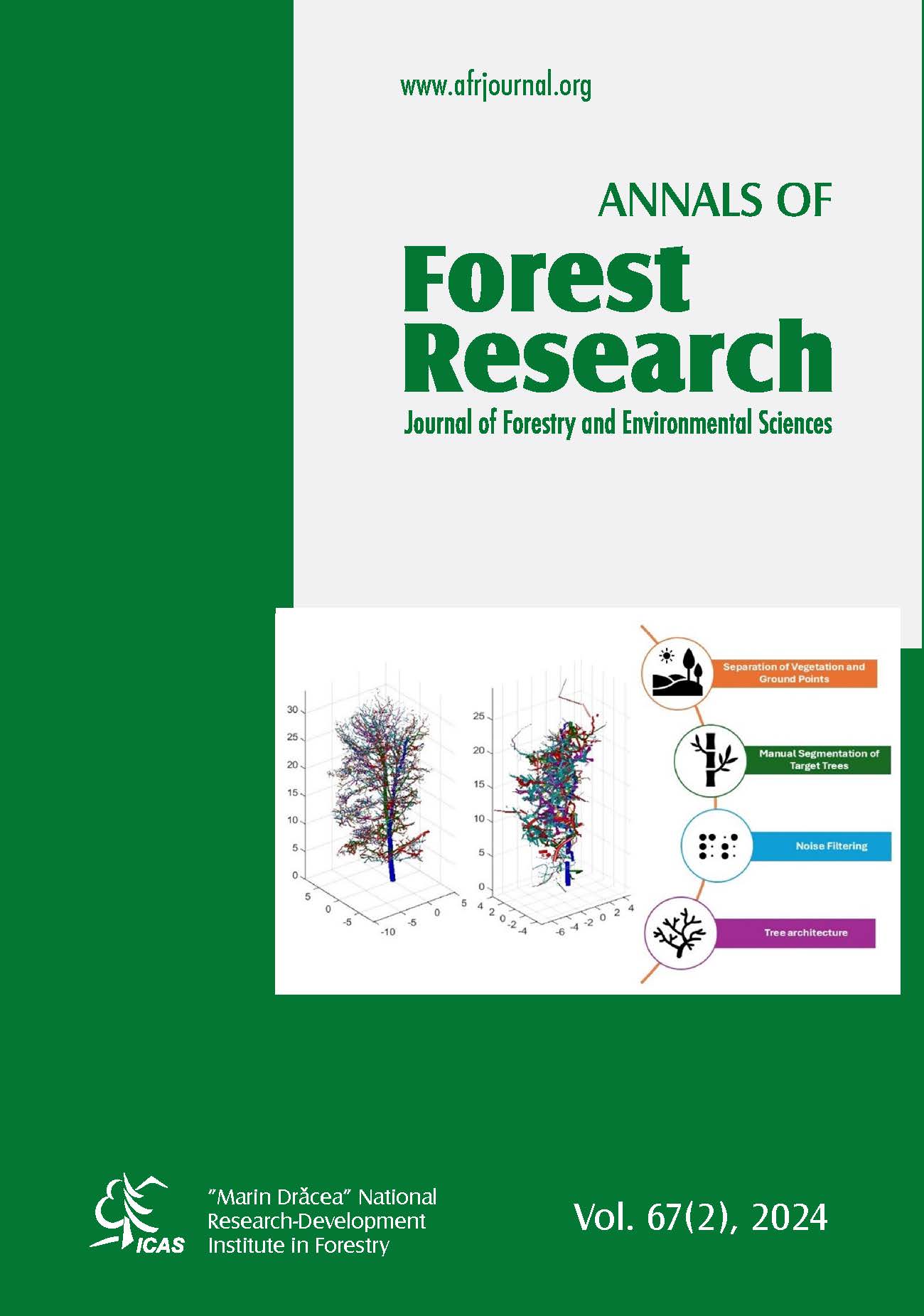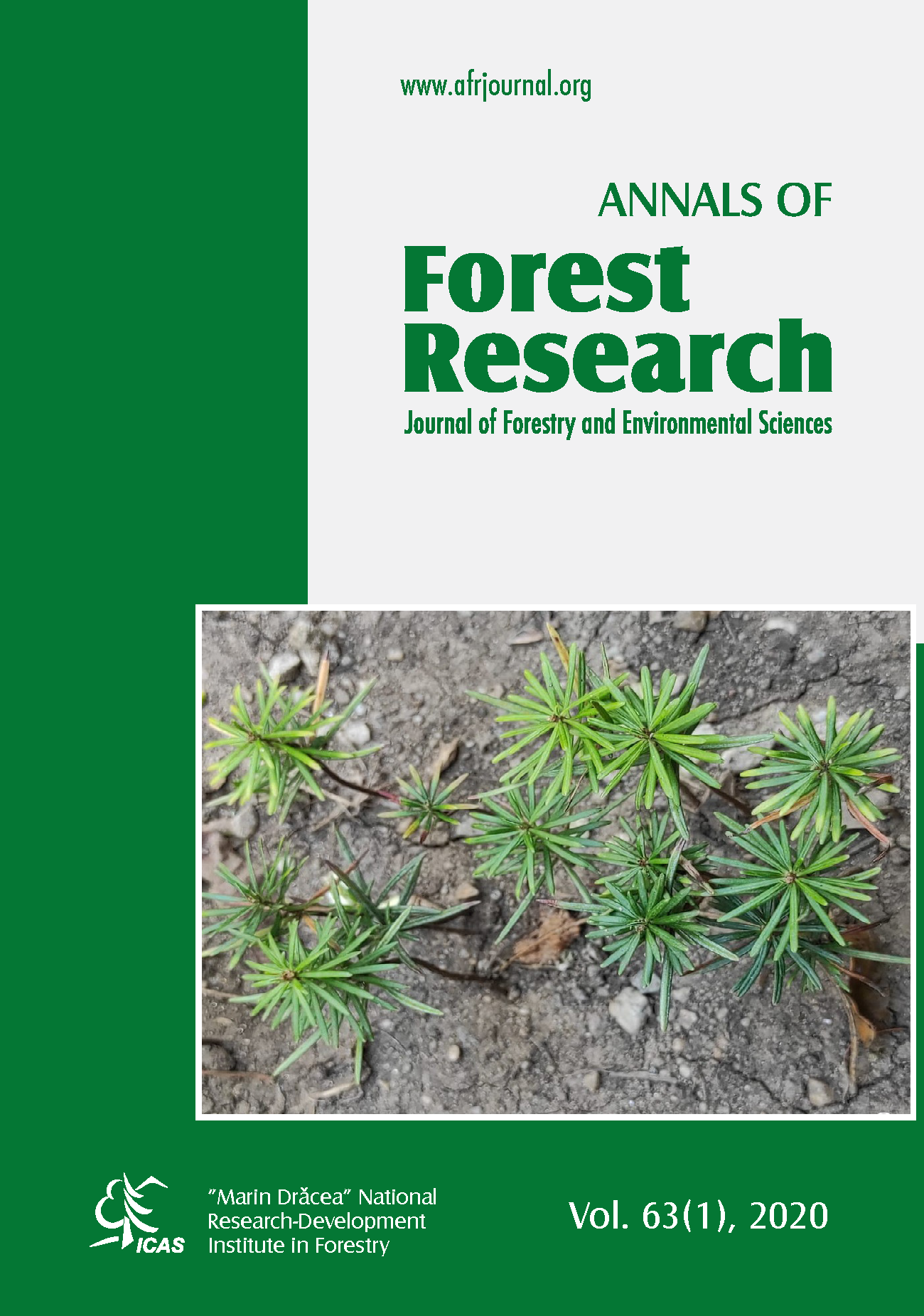The importance of standing deadwood in white-backed woodpecker (Dendrocopos leucotos) habitat from deciduous forests in central Romania
Abstract
The white-backed woodpecker (Dendrocopos leucotos) is one of the bird species which depends on dead and dying trees as their most important habitat resource. Because of this, it is affected by forest management that removes deadwood and changes the structure of old stands. In Romania, its relations with the structures of forests with and without management, including standing deadwood, are not known. The main objectives of this study were the analysis of the most representative elements of snags in its specific habitat – mainly beech forest in low mountains from central Romania. Based on the presence-absence of species, by applying the standard woodpeckers monitoring protocol using a total of 25 fixed points we compared deadwood variables (snag density, volume, basal area) for the entire study area, regardless of forest structure and management, and for stands over 70 years old, as potentially suitable or optimum habitat for the species. The comparison between plots with and without analysed species shows several significant differences especially regarding the number of snags, volume and basal area mainly for stands older than 70 years. The PCA of the variables for the trees with a DBH > 10 cm explained 74.4% of the variance, but for the very large trees (DBH > 40 cm) this percent is the highest one (89.9%). At the same time, the values of several variables (e.g. snag volume, basal area) are similar or higher than those in various areas of Europe. As a main conclusion, these forests are suitable or optimal for white-backed woodpecker and the Romanian forest management can be considered "closer-to-nature" at least for beech stands but for maintaining and improving the species typical habitat structure a few conservation measures should be applied in addition.
Downloads
Additional Files
Published
Issue
Section
License
All the papers published in Annals of Forest Research are available under an open access policy (Gratis Gold Open Access Licence), which guaranty the free (of taxes) and unlimited access, for anyone, to entire content of the all published articles. The users are free to "read, copy, distribute, print, search or refers to the full text of these articles", as long they mention the source.
The other materials (texts, images, graphical elements presented on the Website) are protected by copyright.
The journal exerts a permanent quality check, based on an established protocol for publishing the manuscripts. The potential article to be published are evaluated (peer-review) by members of the Editorial Board or other collaborators with competences on the paper topics. The publishing of manuscript is free of charge, all the costs being supported by Forest Research and Management Institute.
More details about Open Access:
Wikipedia: http://en.wikipedia.org/wiki/Open_access


